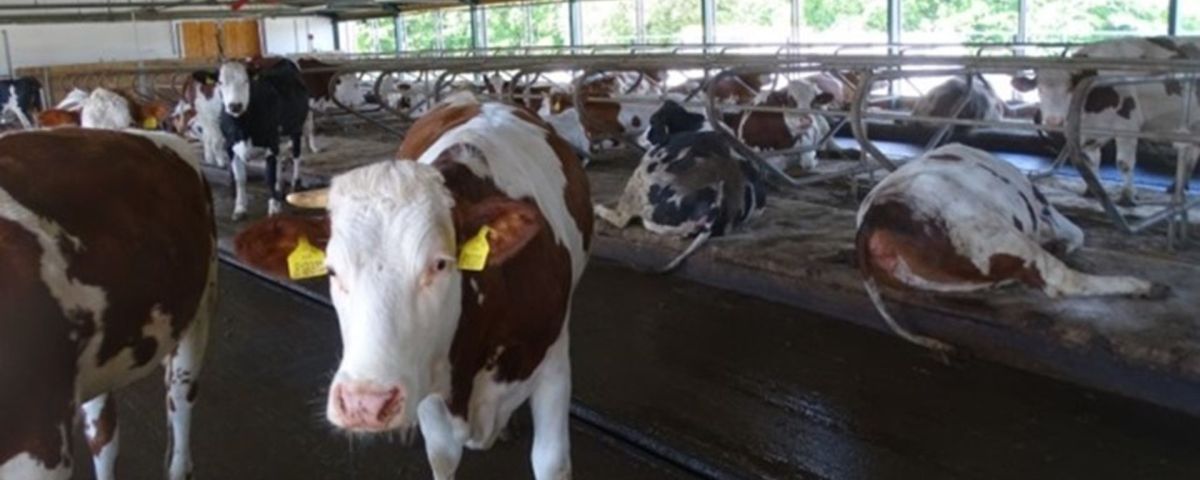|
Getting your Trinity Audio player ready...
|
Martin Mayer and Martin Šálek take us through their latest research into how old ‘messy’ farmsteads may actually be bird hotspots and how modernization changes this.
Old cow sheds are a great place for farmland birds. There are many cracks, corners and beams in these old brick buildings where birds can build their nests. The bedding material for the cows is straw or hay, and there are piles of old bedding material, manure and other ‘trash’ outside the cowsheds. This might make old farmsteads look a bit messy, but all these structures provide great habitat for flies and other insects. Lots of them. And this is what many birds need during their reproductive season in order to feed their chicks. However, old farmsteads (in the Czech Republic mostly built during the 1960s and 1970s) are disappearing from the landscape. One reason is the general agricultural intensification in Europe, which resulted in a massive reduction of smaller farmsteads and the creation of fewer, very large farmsteads.
With the accession of the Czech Republic to the European Union in 2004, and the subsequent application of the Common Agricultural Policy, farmers started to renovate and modernize or build new farmsteads, incentivized by the Czech Rural Development Programme. Modernization of dairy farms is linked to changes in the architecture of cow sheds (e.g., building semi-open cow sheds without attic spaces and using new construction materials, such as steel) and the application of new technologies (e.g., sand bedding systems and mechanical manure removal systems). These structural changes might improve farming efficiency, animal welfare and make the farm look tidier, but they might come at a cost for farmland birds that made farmsteads their home.
In our new study, we compared farmland bird abundance and species richness (the number of bird species found per farmstead) in old ‘messy’ farmsteads compared to new or mixed (consisting of both old and new buildings) farmsteads. We found that the overall bird abundance was almost 3-fold higher in mixed and old farmsteads compared to new/modernized farmsteads, likely as a result of reduced nesting and foraging opportunities. Similarly, species richness was higher in old and mixed farmsteads compared to new farmsteads. Additionally, there were consistently more active nests in old compared to new/modernized cow sheds, with 1.6-fold more house sparrow nests, 8.7-fold more house martin nests, and 9.8-fold more barn swallow nests in old compared to new/modernized cow sheds.
This is bad news for farmland birds, indicating that farmstead modernization may have strong adverse effects, potentially contributing to recent large-scale bird population declines. Moreover, our previous research clearly documented that active farmsteads with animal husbandry are local bird diversity hotspots in agricultural landscapes, and host many species of conservation concern (Šálek et al., 2018). The negative effect of farmstead modernization may be especially important for birds that nest in buildings, because farmsteads represent high-quality foraging habitat with increased breeding performance of those building nesters compared to other farming systems and habitats. Importantly, modernization of farmsteads is an ongoing process, in parts driven by the EU’s Common Agricultural Policy that pays subsidies directly linked to farmstead size, so larger farms will receive most of the money. This might lead to a further landscape homogenization over the coming years and directly conflicts with the EU Biodiversity Strategy for 2030, aiming to halt biodiversity loss and to restore healthy agroecosystems.

As a drop of hope, we found that the number of house sparrow and barn swallow nests increased with years since modernization/construction of the building, though this effect was comparatively small. This means that it might be possible that bird numbers increase a decade or two after a building was constructed/modernized. This process should be accelerated by providing adequate nesting opportunities for the affected bird species. We propose that a condition for receiving EU funding for farmstead modernization should be a legal obligation to support nesting opportunities in new farmstead buildings for cavity and other building-nesters to mitigate the loss of nesting sites during modernization. For instance, breeding opportunities could be provided by installing external or integral nest-boxes, special (swift or sparrow) nesting bricks, artificial nest cups as well as leaving access to nesting holes in renovated and new farm buildings. Moreover, nesting availability for mud-nesting swallows and martins could be enhanced by using construction material consisting of rough surfaces (e.g., concrete or wood), at least under the eaves of buildings. Similarly, using hay/straw bedding in cow sheds and retaining manure heaps could increase insect availability. Finally, supporting and retaining small farmsteads with low-intensity animal husbandry (that provide both nesting and feeding opportunities for farmland birds) may be a vital tool for increasing farmland biodiversity and promoting sustainable agricultural development in an era of global biodiversity crisis. This will require rethinking the EU’s Common Agricultural Policy.


